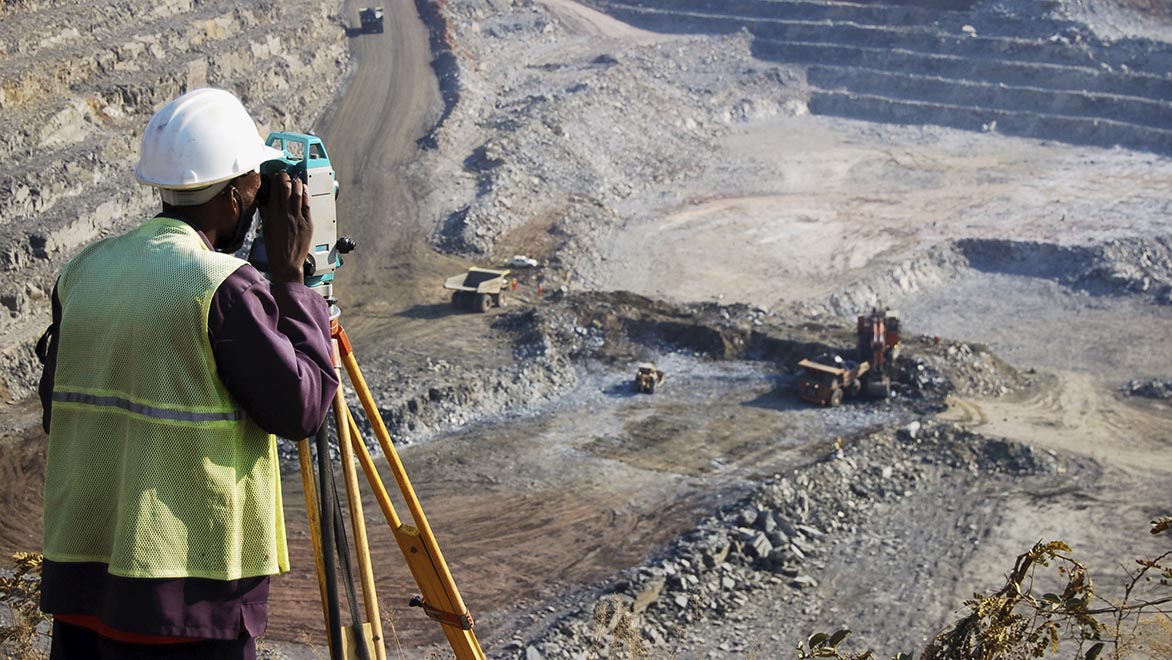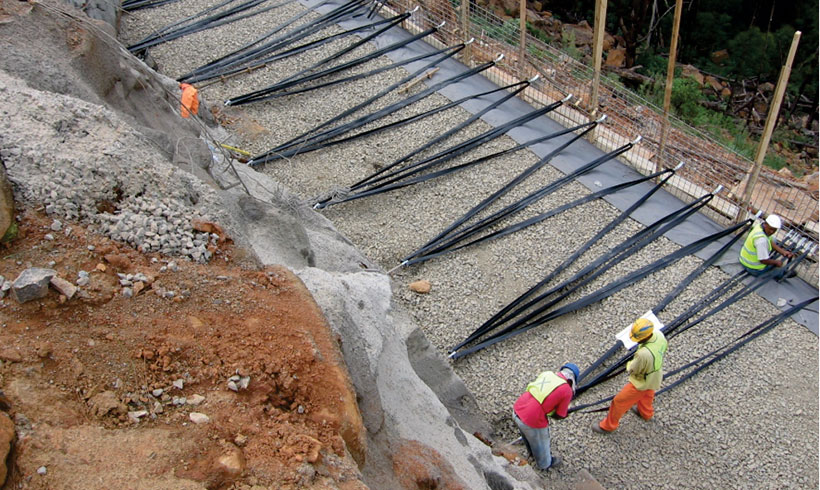Little Known Facts About Geotechnical Engineering For Construction Projects.
Little Known Facts About Geotechnical Engineering For Construction Projects.
Blog Article
Facts About Geotechnical Engineering For Construction Projects Uncovered
Table of ContentsNot known Facts About Geotechnical Engineering For Construction ProjectsGeotechnical Engineering For Construction Projects - QuestionsWhat Does Geotechnical Engineering For Construction Projects Mean?The Single Strategy To Use For Geotechnical Engineering For Construction ProjectsThe Facts About Geotechnical Engineering For Construction Projects Revealed4 Simple Techniques For Geotechnical Engineering For Construction ProjectsSee This Report on Geotechnical Engineering For Construction ProjectsGeotechnical Engineering For Construction Projects Fundamentals Explained
Accompanying this enhanced complexity comes geological and environmental elements that influence the design of the foundation, which is perhaps the most fundamental part of any kind of development. Individuals require to trust that structures, bridges, and streets will certainly stand the test of time. A Geotechnical designer advises on how a framework can best be sustained offering its distinct conditions What's concealed below the surface of the ground is most likely one of the most vital piece of details that a Geotechnical Engineer seeks.These examples are after that examined by the laboratory to figure out soil structure (Geotechnical Engineering for Construction Projects). The malfunction of sand, silt, clay, and various other products existing in the dirt, helps the engineer determine what special qualities the website has and what the effects of those might be. Of program dirt make-up is just one examination that can be carried out on samples
The Buzz on Geotechnical Engineering For Construction Projects
Based upon these examinations, there might be more dirt borings that are drilled, or the engineer may have sufficient information from the initial examinations to make a referral to the customer on how ideal to continue with their job. Results are usually reported via borings logs which show the soil make-up and features at a variety of midsts.
Geotechnical engineers are liable for comprehending the buildings of natural resources and using this knowledge to develop risk-free, cost-efficient styles for construction tasks. It is a vital part of any type of civil engineering job, as it is utilized to determine the viability of a site for building and construction and to make certain the framework's safety and security.
This includes performing lab examinations on the samples and making use of geophysical techniques such as seismic refraction and electrical resistivity studies. This information is made use of to examine the website's suitability for building and construction and to establish the kind of structure that ought to be utilized. Geotechnical engineering assesses soil problems, identifies prospective hazards, picks an ideal structure system for the suggested framework, and figures out the finest foundation design for a provided project.
The Single Strategy To Use For Geotechnical Engineering For Construction Projects
The framework may come to be unsteady or collapse without proper soil stabilisation, bring about expensive repairs and possible injury. The stabilization procedure involves utilizing numerous methods to boost the security of the soil, such as compaction, grouting, and the addition of reinforcing products. Without dirt stabilization, the risks linked with building projects would certainly be a lot higher, and the results a lot less dependable.
Geotechnical engineers conduct site examinations to evaluate the dirt's homes and identify prospective threats. They create and apply soil stablizing techniques, such as adding concrete, lime, or various other supporting representatives, to boost the dirt's strength and stability.
Getting My Geotechnical Engineering For Construction Projects To Work
Geotechnical designers are vital in aiding to guarantee that dirt stablizing is done properly to make sure that the framework is secure and secure. Geotechnical engineering is additionally utilized to analyze dirt problems and recognize potential dangers. This includes evaluating potential flooding, landslides, and other natural calamities that might impact the structure.
Geotechnical engineers use this understanding to do website investigations, soil, and rock testing, and to analyze the results to identify the appropriate design specifications for a task. This info is used to ensure that the foundation, retaining wall surfaces, inclines, and other frameworks constructed on or within the subsurface materials have adequate security and resistance to outside lots, such as quakes, wind, and water.
These frameworks require a deep understanding of the actions of the subsurface products, in addition to the ability to take care of the impact of excavation and construction on the surrounding setting. Geotechnical designers use their expertise to identify the proper layout specifications for these frameworks, such as the shapes and size of the tunnel, his comment is here the toughness of the supporting rock, and the kind and amount of assistance required.
In enhancement to the style and building of structures, geotechnical design additionally plays a crucial function in the rehab and upkeep of existing frameworks. As structures age, they might experience degradation or other problems that influence their security and performance. Geotechnical designers use their knowledge to examine the problem of these structures, recognize the root causes of the troubles, and develop approaches to address them.
Things about Geotechnical Engineering For Construction Projects
In this write-up, I will go over the role of geotechnical design and the types of problems geotechnical engineers address. Geotechnical designers (geotechs) are associated with virtually every kind of civil engineering task. Every framework is sustained by dirt or rock unless it is drifting, flying, or dropping down.
Geotechs are usually most entailed at the start of a job. Geotechnical Engineering for Construction Projects. Some of the jobs that a geotech might be responsible for are investigating subsurface problems, figuring out needed lab screening of dirt and rock, interpreting the subsurface expedition results, you could try this out and writing records that document the website problems and give referrals for structures, fill specs, slope stability, and so on
It is not unusual for geotechnical engineers to focus on just one of the locations noted above and study that subject their entire occupation. Geotechnical engineering is an important aspect of any civil design project. Regardless of just how great a framework is constructed, it will certainly not be terrific for long if the foundation is insufficient.
8 Easy Facts About Geotechnical Engineering For Construction Projects Shown

Sometimes, points that may not seem crucial end up being crucial years later when concerns emerge. One last thing to bear in mind: geotechnical design is married to geology. No issue exactly how terrific your design expertise is, if something vital is missed in the geologic characterization at a site, your competence may not conserve you.
Jese lives in West Virginia with his spouse and boy. He appreciates creeping about on any kind of landslide he can discover and investing time fly angling on the water. He can be discovered on LinkedIn. I wish you enjoyed today's message by visitor author Jese Vance. If you have an interest in your company perhaps joining the Civil Engineering Collective, please contact us right here or call us at 800-920-4007. I hope you'll join us.
Not known Details About Geotechnical Engineering For Construction Projects

It is necessary to create the structure to withstand natural and man-made tons. Tons can be upright or side. It is essential to understand the more information dirt problem before developing the kind and deepness of foundation required for the structure. In order to recognize the subsurface dirt condition, a geotechnical investigation is needed.
The smart Trick of Geotechnical Engineering For Construction Projects That Nobody is Discussing
When the examination results come, the Geotechnical Designer analyses the report, which details the dirt and rock residential properties groundwater problem and the linked threats. The type of structure called for to develop the framework is then determined. Based on the recommendation of the Geotechnical Designer, the structural designer then makes the framework.
Report this page